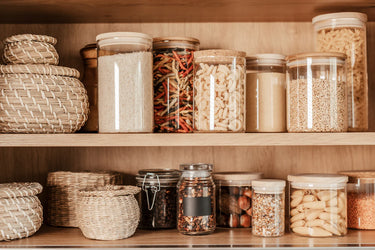Knowing The Difference Between These Common Techniques Will Make You A Better Cook

Anyone who’s seen the iconic Schitt’s Creek scene in which David and Moira attempt to make her “famous enchiladas” knows that many cooking terms are not exactly straightforward.
“What does fold in the cheese mean?” David asks Moira, as he stands whisking a bubbling pot. “Do you fold it in half like a piece of paper and drop it in the pot?” Then, even more exasperated when she insists he should just “fold it in,” he yells “I don’t know how to fold broken cheese like that!”
We’ve all been there and we’ve got you. Becoming a more confident cook in the kitchen is much easier when you know the difference between common cooking techniques.
Folding vs Stirring
Whether you’re being asked by a recipe to “fold” or to “stir” an ingredient, you’re being asked to blend it. The question is in what way. Stirring is assumed to be more casual—simply moving the implement, be it a wooden spoon or a silicone spatula—to move the food around in the bowl or pan. This can be in a circular motion, but it’s not necessary. Folding, meanwhile, is about mixing a delicate, airy ingredient (like whipped cream or beaten egg white) into a denser, heavier ingredient (like egg yolks, custard, or chocolate) without deflating that first, airy ingredient. One popular way to do this is by beginning to lighten the heavy ingredient first by whisking about one-quarter of the light mixture into the heavy one. Then, use a large, flexible spatula to incorporate the remaining light ingredient. It helps to rotate the bowl to do this, rather than the spatula.
Whisking vs Beating
As the word implies, whisking is done with a whisk. This common cooking implement is made of loops of thin metal wires in a teardrop shape with a long, narrow handle. Whisks are used to blend ingredients (as in dry ingredients for a cake), to whip air into ingredients to increase their volume (like egg whites or heavy cream), or to emulsify fats and liquids (like when making a homemade mayonnaise). To whisk properly, you want to continuously move a whisk through whatever ingredient you’re using. Move the whisk side-to-side through a mixture to efficiently incorporate ingredients, or in alternating figure-eight and circular motions if using a whisk in a pot. Beating is when you use a whisk in a diagonal motion in a bowl to incorporate air into the ingredients. You’ll want to beat egg whites, for example, but not the dry ingredient mixture for a cake, which would go flying all over!
Baking vs Broiling
While both baking and broiling use the oven, they make use of different heating elements and intensities. Broiling uses only the upper heat element of the oven (or the top of a broiling drawer) to direct intense heat at food. It’s good for things that need to be just melted or browned (as in melted cheese on top of mac and cheese) or quickly cooked (like thin fish filets). Because broiling can char or burn food very quickly, it’s important to keep an eye on it while using the broiler. Baking uses temperatures from 170º to 400º F with circulating air. These temperatures are considered moderate (as compared to roasting) and are well-suited for cakes, breads, pies, and other baked goods, or anything you want to cook evenly over a longer period of time. Casseroles, large vegetables, and frittatas are all great foods to bake rather than broil or roast.
Searing vs Sautéing
Though both searing and sautéing involve a pan and a stovetop, they’re very different cooking methods. The goal of searing is to get a well-browned crust on a food (like the skin of fish, a steak, or mushroom) over high heat. To sear, start by heating a pan over high heat, then add fat (like oil or butter) to the pan until it’s just beginning to smoke, and then add the food. When searing, you might not be cooking the food through entirely, but just creating that delicious crust. Sautéing is about cooking the food through entirely. It’s a quick-cooking method that requires flipping and stirring so that foods (like chopped vegetables or sliced onions) cook evenly. Unlike the high heat required for searing, you’ll want to use medium heat for sautéing so the ingredients cook evenly.
Boiling vs Simmering
Often a recipe will call for bringing a liquid to a boil, then reducing to a simmer. Why does it matter? And when do you know if the liquid is simmering? Boiling is when the liquid reaches 212 degrees Fahrenheit. There should be very large bubbles breaking through the surface continuously. Though useful for blanching vegetables, evenly cooking grains like brown rice or quinoa, and cooking pasta, boiling can make foods tough. A liquid is simmering when it is between 180 to 190 degrees Fahrenheit. You can recognize it when small bubbles pop on the surface occasionally. Thanks to its gentler environment, simmering is best for braising meat, poaching chicken, or thickening sauces and reducing liquids to intensify their flavors. The reason you bring a liquid to a boil before reducing to a simmer is because you can heat the foods evenly and quickly, and it’s easier to nail that precise simmering temperature when reducing from boiling.





